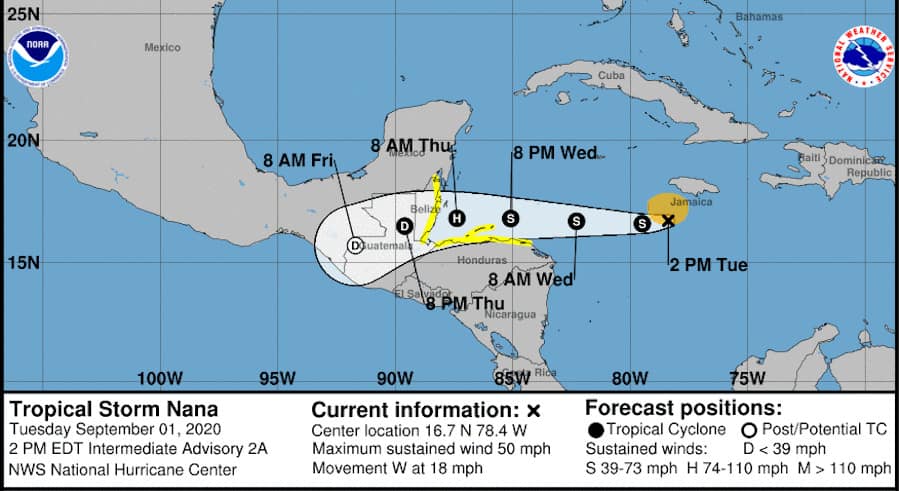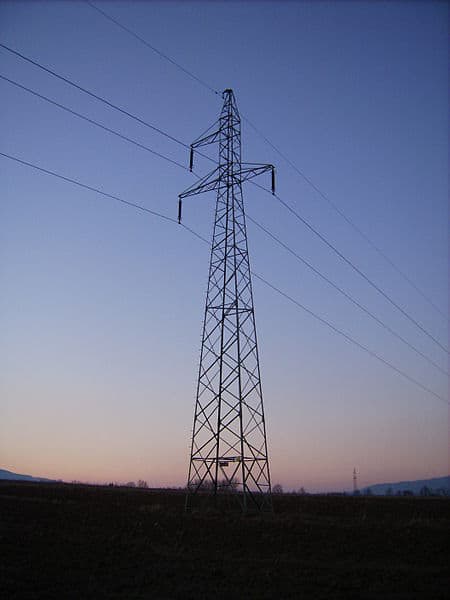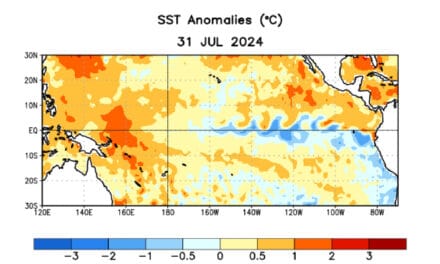Indiana Task Force Members search the rubble of a home for survivors following Hurricane Laura in Texas and Louisiana.
Photograph by Photo by Indiana US&R Task Force 1 via FEMA
Very Active Atlantic Hurricane Season Produces Season’s 14th Named Storm
With four active systems in the Atlantic basin, the record-setting 2020 hurricane season produced its fourteenth named storm and sixteenth tropical cyclone. Tropical Storm Nana formed south of the Jamaica in the Caribbean Sea on Monday, August 31, 2020. Nana is the earliest “N” named storm on record. The tropical storm formed out of Depression 16.
Hurricane Preparedness: Are You Ready?
Nana will follow a westerly course and reach Central America on Thursday, September 1 as a Category 1 Hurricane. The coasts of Belize, Honduras, and Guatemala are under a tropical storm watch. Hurricane watches and warnings are expected as the storm moves closer to landfall. When Nana reaches hurricane strength, it will become the fifth hurricane of the season.
Current forecast track has landfall in Belize approximately midday Thursday with storm surge, heavy rain, inland flooding, mudslides, and power outages. Interaction with land and the mountainous region will cause rapid weakening to a depression by late Thursday.
Here are the Key Messages for Tuesday early afternoon for Tropical Storm #Nana. The biggest change from the previous advisory is that it is now forecast to be a hurricane near landfall. Full forecast https://t.co/tW4KeFW0gB pic.twitter.com/u7IwBt413T
— National Hurricane Center (@NHC_Atlantic) September 1, 2020

National Hurricane Center Forecast Cone and Track for Tropical Storm Nana, Tuesday, September 1, 2020. NOAA graphic.
Tropical Depression 15 Expected to Strengthen
Off the East Coast, Tropical Depression 15 is on an easterly course off the North Carolina coast and headed away from the United States. It could become a Tropical Storm on Thursday before it reaches cooler water and begins to weaken and lose tropical characteristic. Depression Fifteen would be named Omar if it becomes a tropical storm. Impacts to the United States remain low with high seas and rip currents along the East Coast.
Hurricane Back Up Power Generators in Stock
After Omar, just 6 names remain on the list for the 2020 hurricane season. If the season progresses as expected with up to 25 named storms, the National Hurricane Center will begin using the Greek Alphabet instead of names starting with Alpha and then Beta. The notorious 2005 Hurricane Season produced thirty-one tropical cyclones including two unnamed tropical systems. The last two storms of that season were Hurricane Epsilon and Tropical Storm Zeta.
Two disturbances, one midway between African and the Caribbean and the other about to emerge off the African Coast have a chance to become tropical systems. The system headed for the Caribbean has a low chance over the next week to become a tropical system. Forecasts have Disturbance 1 meandering through the Tropical Atlantic.
Disturbance 2 is now moving off the coast of Africa with a 50% chance of 5-day development and could form a depression by the weekend. Conditions could remain conducive to further development and a tropical storm or hurricane could form.
#Nana develops quickly this morning in the Caribbean and #TD15 is east of Hatteras. Neither threatens the USA so our attention will shift back to the MDR (main development region) next week. pic.twitter.com/mnnihO63CD
— Jim Cantore (@JimCantore) September 1, 2020

Four Systems in the Atlantic to watch. Tropcial Storm Nana will likely strengthen to a hurricane. Depression 15 may become a tropical storm. Disturbance 1 (Yellow) may have some potential in five or more days, while disturbance two will likely form a depression or storm over the weekend. NOAA image.
Hurricane Season Peak Arrives September 10
The 2020 Season has produced 16 Tropical Systems 10 days before the average seasonal peak. After September 10, activity usually declines through October and the season ends on November 30. Tropical cyclones can form at any time of year, however. This year’s first two storms, Arthur and Bertha, arrived before the official June 1 season start.
The Colorado State University Tropical Meteorology Department will issue another two-week forecast tomorrow on September 2. As the season’s peak approaches and given the current conditions driving the active season, the forecast for a hyperactive hurricane season will probably continue.
If you live anywhere on the Atlantic Coast, Gulf Coast, or Caribbean Coast, now is the time to complete preparations for the next Hurricane or Tropical Storm.
Devastating Damage From #HurricaneLaura2020. #Evacuation and #Shelter Limited by #COVID19 #Coronovirus. Wide-Spread #PowerOutages amid 90 deg. Temps and Humidity. https://t.co/Iphfg6hRUF pic.twitter.com/zqzQWhgLjl
— Norwall PowerSystems (@NorwallPowerSys) August 27, 2020















